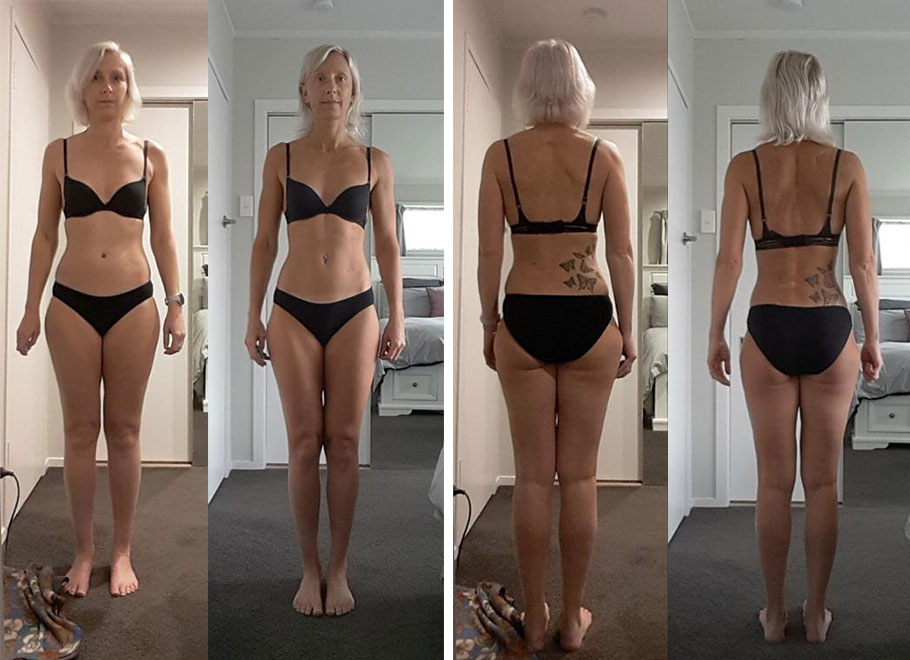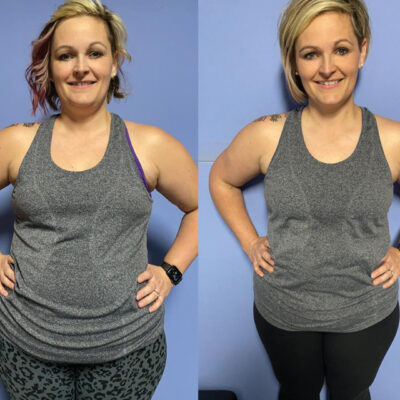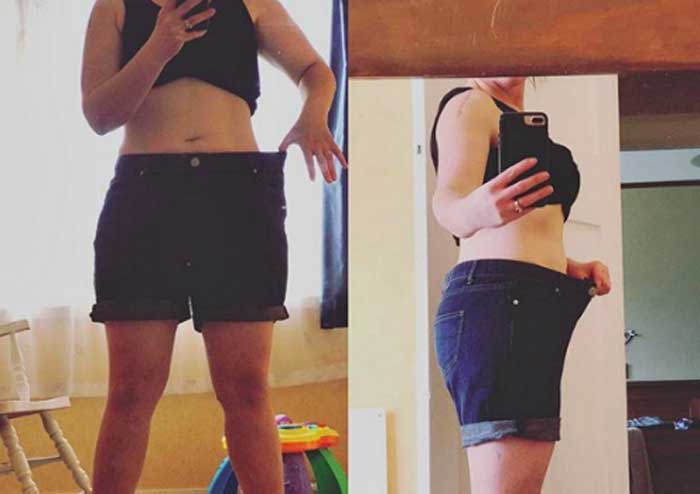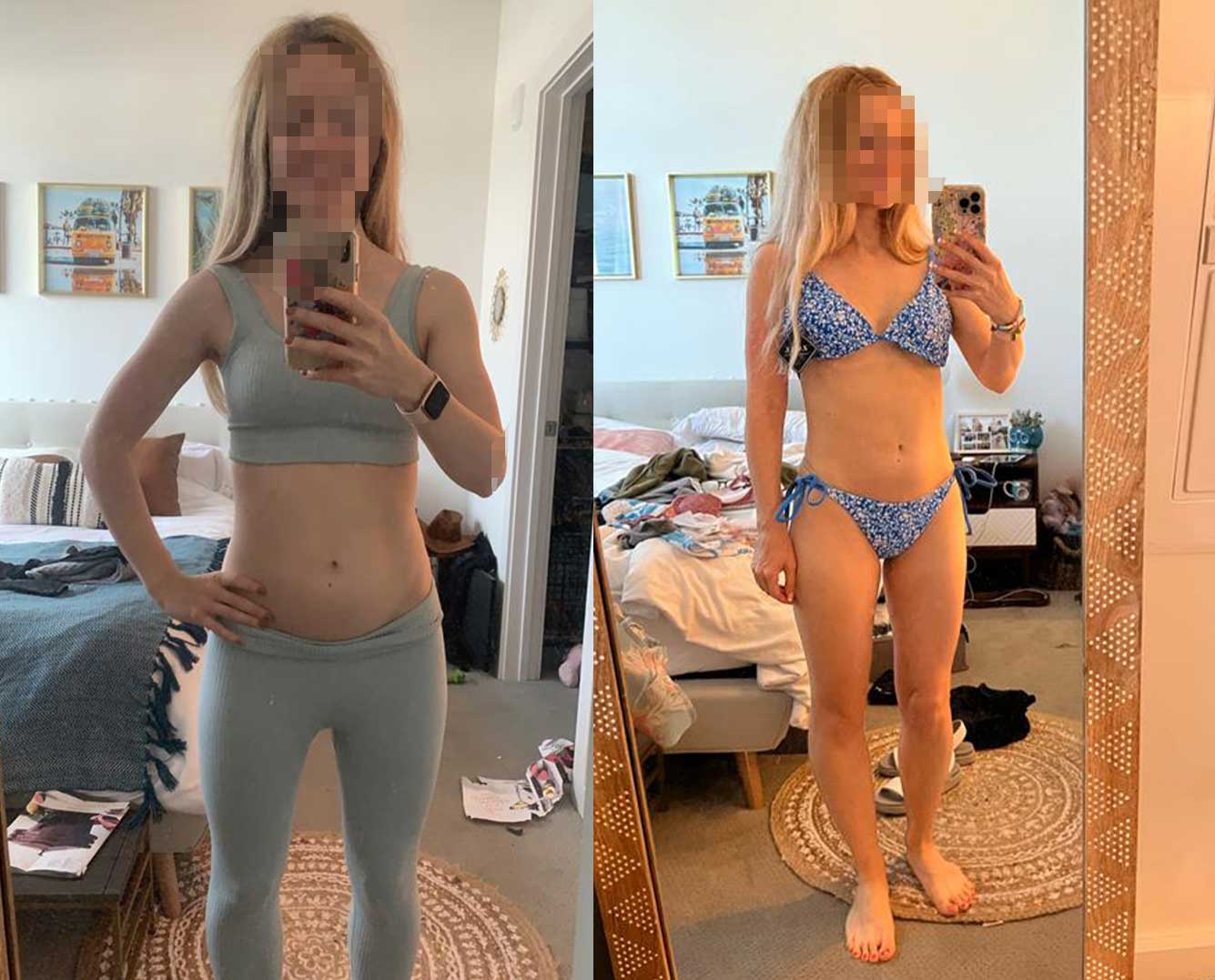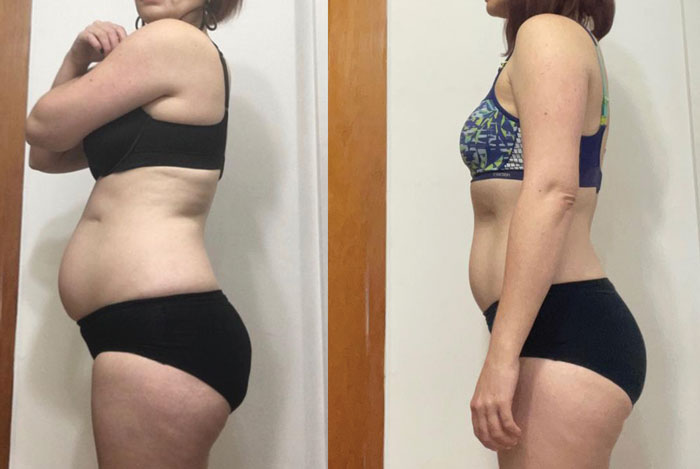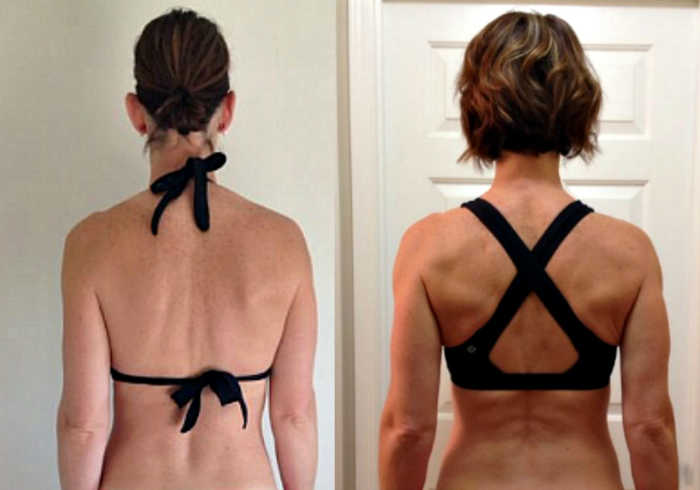Living Stronger: The Muscle-Longevity Connection
I’m sure you’ve witnessed the impact that increasing frailty has on your loved ones as they age. It’s heart breaking to witness their decline but it also makes us worry about our own future. Will we be able to maintain independence and have a good quality of life as we get older?
The answer to this question is deceptively simple: muscle.
If I could offer you just one piece of advice for a longer, healthier life, it would be this — build muscle and prioritize your strength as you age. Yet, unfortunately, building muscle is very often overlooked and even feared by women.
During our younger years, we’re preoccupied with our appearance, often fearful of becoming ‘bulky’ or we feel intimidated by weight lifting. This fear leads many of us to hold back on building strength. In fact, in my 30s I actually spent a couple years shedding muscle because I felt bulky – so I understand. Now, in my 40s, I’m striving harder than ever to rebuild that muscle (and believe me, it’s much more difficult than it once was).
Why am I working so hard to build muscle and why should you?
Longevity, vitality and the quality of your life as you get older – depends on muscle mass.
I can’t stress this enough – if you are not lifting weights at least a couple times a week with the goal of getting stronger and building muscle – you are in decline towards frailty and missing out on one of the best ways to protect yourself against common problems associated with aging.
There is no physical exercise other than “resistance exercise” (lifting weights) that will achieve this for you. Let me be clear – you can be the most active person – hiking, biking, or whatever other recreational activities keep you fit – but without resistance exercise you are losing muscle.
Chances are you already feel your body getting weaker, even if it’s just subtle. Many women feel the loss of strength accelerating in their 40s and and especially around menopause. I wish with all my heart that I could convince you to lift weights because it could be the one thing that dramatically changes your life. Building and maintaining muscle mass as we age is crucial for several reasons. In case you aren’t yet convinced, let’s talk about them.
How Muscle Holds the Key to Lifelong Wellness
1. Reduce Body Pain And Improve General Well-Being As You Age
Weight training is one of the best ways to improve your overall well being as you age, especially because it reduces the aches and pains normally associated with aging. Some of my favourite things that I love hearing from ladies when they start my programs are:
-reduced back or neck pain,
-improved posture and confidence in how they move and stand,
-improved balance,
-greater strength for activities such as hiking, biking, skiing and other sports,
-an ability to move and exercise with much less pain,
-deeper, more comfortable sleep, and
-reduced frequency and severity of hot flashes.
All of these things are very important for longevity. Strong muscles also act as protective buffers around your joints. They help stabilize joints, reducing the risk of injury and wear and tear. This added joint support can ease pain and improve mobility.
2. Maintain Functional Independence In Your Senior Years
Loss of muscle will be one of the main reasons you lose independence when you are older.
If you are over 40, you probably feel and see your body changing. We lose muscle naturally as we age and it’s estimated that this escalates to a loss of approximately 1%–2% of our muscle mass annually after the age of 50 and then increasing to approximately 3% annually after the age of 60. This loss of muscle, often referred to as sarcopenia, will be one of the biggest reasons you start losing independence in old age. I don’t know about you but I find it terrifying to think that I may not be able to look after myself at some point.
Maintaining muscle and strength is also key for preventing falls which is one of the most devastating things a senior can experience. When seniors have a fall they often subsequently experience a decline in health and mental well being due to reduced mobility, loss of confidence and pain. Being immobile or less active leads to further weakness, joint problems and physical decline.
In fact, it has been found that if you already have a deficiency in muscle mass and have a fall, which then leads to further muscle loss from being immobilized, that your chances of recovery are much worse. It’s estimated that over 50 per cent of women over 65 years who experience a fall never walk again.
You probably also have goals to be able to do certain activities as you get older – like hiking, golfing or keeping up with grandkids. I have a client who just turned 67 who has push up and plank contests with her grandkids. She is stronger than many 20-somethings. She credits her strength and energy to finding weight training in her 40s. The quality of her senior years is dramatically different than most ladies her age. You can have this too – if you train weights.
3. Improve Your Bone Health
Do you know if you are at risk for osteoporosis? If you have risk factors for low bone density – such as being thin or petite, having a family history of osteoporosis, or even just being post-menopausal – you should be concerned about your bone health. Sarcopenia and osteoporosis often happen concurrently, and loss of muscle puts you at greater risk of falls while osteoporosis increases your risk of fracture when you fall.
It’s well known that resistance exercise is really important for bone health. Muscles exert force on bones, contributing positively to bone density and reducing the risk of osteoporosis. Given that the prevalence of osteoporosis in women worldwide is estimated to be over 20 percent, this is a big concern and it’s not something you want to address after it develops. Prevention is preferable and any prevention program would include a proper weight training program to develop and maintain strength and balance.
If you are wondering what I mean by a “proper weight training program” – research suggests that the most effective exercise for bone health is lifting weights with the goal of progressively increasing strength. This means lifting heavy and always trying to improve and would include lifting at least a couple times a week and targeting your hips and spine when training. It sounds intimidating if you are new to all of this but remember I can help!
If you want to skip ahead and get started, you can learn more about my most popular program here.
4. Prevent Common Diseases Associated With Aging
The amount of muscle mass you have influences your metabolic health which plays a crucial role in preventing chronic diseases as we age.
Having muscle is extremely powerful when it comes to combatting some of the most common diseases and ailments we experience with age. Your body’s muscle mass influences insulin sensitivity and glucose regulation – or what is often referred to as “metabolic health.” Metabolic health plays a crucial role in preventing chronic diseases associated with aging, with diabetes being the most obvious example. Moreover, it helps counteract various age-related changes in the body, such as belly fat and weight gain in general. Lower body fat means less inflammation, improved joint health and mobility and better health overall.
In contrast, if you have poor metabolic health, you have a heightened risk of conditions like cancer and heart disease. There is also emerging evidence linking it to cognitive decline and the onset of dementia. Indeed, many experts in longevity emphasize the importance of maintaining good insulin sensitivity and glucose regulation for preserving cognitive health (and lifting weights is one of the top recommendations).
If you do end up sick or needing surgery, having a good baseline of muscle mass can help with recovery including speeding it up and making it more likely that you can get back on your feet again. Having low muscle mass is also correlated with an increased risk of mortality from cancer or an decreased likelihood of recovery from it.
5. Experience The Muscle Metabolic Advantage
The “muscle metabolic advantage” refers to the fact that muscle tissues burns more calories at rest than fat tissue.
Besides the metabolic health outcomes discussed above, having more muscle is better for what you probably traditionally think of as “metabolism.” Muscle tissue is metabolically active and requires more energy (calories) to sustain itself compared to fat tissue. As a result, individuals with a higher muscle mass tend to have a higher Resting Metabolic Rate (meaning they burn more calories at rest).
Moreover, weight training burns a lot of calories not just while you are lifting weights but in the post-workout recovery period as your body repairs itself from a hard training session.
While the exact numbers can vary from person to person, some estimates suggest that each pound of muscle may burn twice as many calories as a pound of fat. However, these numbers are approximate and can depend on factors like age, sex, genetics and quality of your nutrition.
It’s important to note that while muscle burns more calories at rest than fat, the overall impact on daily calorie expenditure is relatively small compared to other factors – especially having a good diet. Nonetheless, preserving and building muscle mass can contribute to improved metabolic health and make it easier to manage body weight and composition.
Shaping Your Way To A Better Future
Aging often feels like Mother Nature’s cruel joke. We witness our loved ones succumb to frailty, and then we find ourselves on a similar path. The problem is that we often accept it as an inevitable fate or mistakenly believe that what we are currently doing is enough.
However, I want you to know that it’s not inevitable, and there’s so much more you can do to change the course of your own aging journey and your life as a senior. Through my work, I’ve had the privilege of positively influencing the life trajectory of countless women. I witness their transformations every day, and I know this is possible for you too.
I understand how daunting it can be to step out of your comfort zone. I also recognize that it might be challenging to appreciate the benefits of weight training if you haven’t experienced them firsthand. That’s why I’m here to help.
Whether you’re a beginner or at an advanced level, there’s more you could be doing. Start by checking out my programs designed to empower you as you age (linked below) and don’t hesitate to reach out if you have any questions.
The best time to start is now! You’ll be amazed at the positive impact it can have on your life.
Learn more about my MOST POPULAR TRAINING & NUTRITION PROGRAM here.
Learn more about TRAINING PROGRAMS here (just training, no nutrition).


